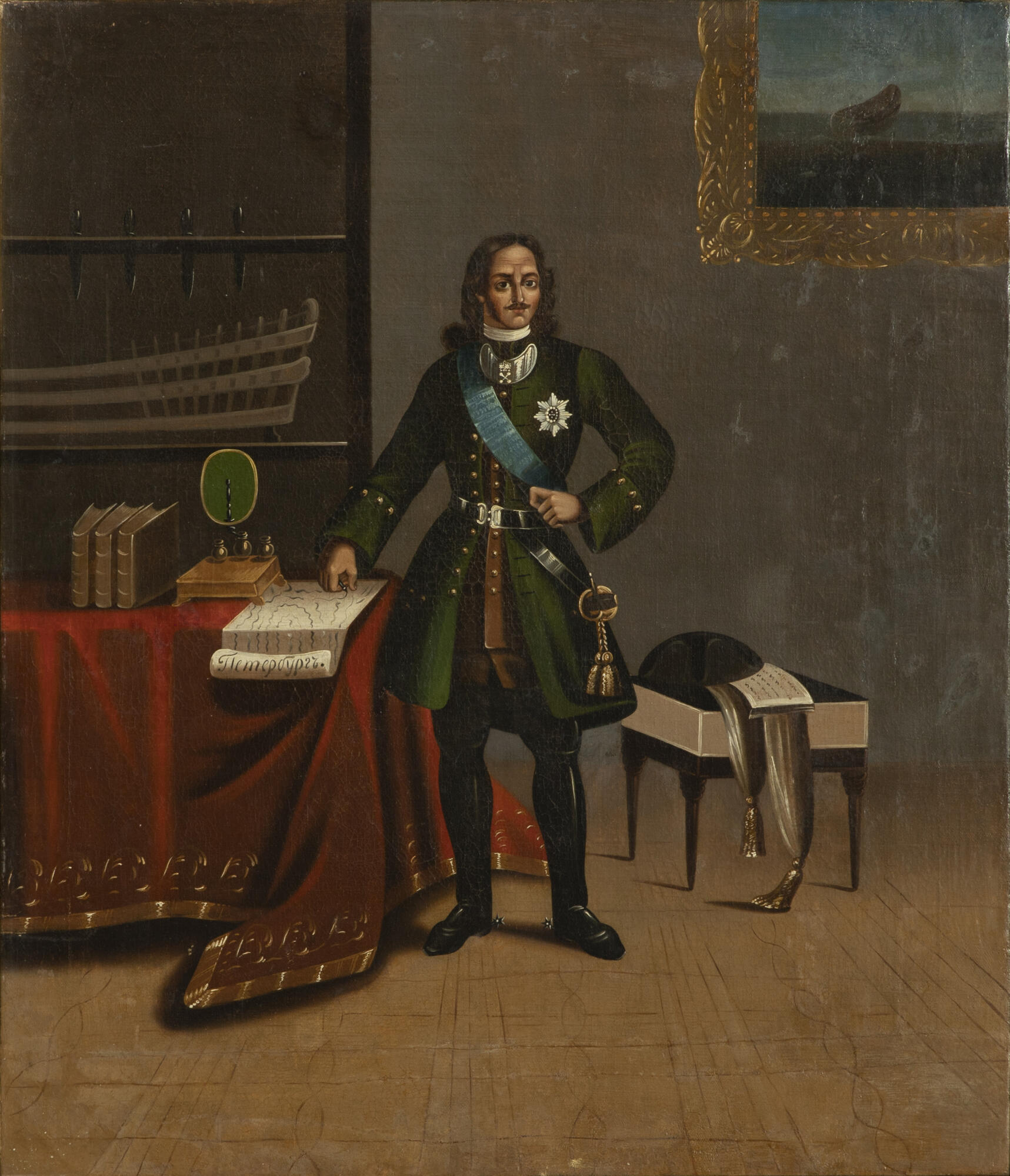Portraits of Emperor Peter I, the reformer of Russia, were quite common in the art of the 18th century. The images include paintings by famous Western European artists, such as Jean-Marc Nattier and Jacopo Amigoni, as well as works by Russian painters such as Andrey Matveevich Matveev, Ivan Nikitich Nikitin, and Alexey Petrovich Antropov.
The collection of the Lipetsk Regional Museum of Local Lore contains two portraits of Peter I, which date back to the late 18th century. This oil painting was created by an unknown amateur artist and belongs to the early period of Russian art.
Although the figure of Peter Alekseevich is somewhat stiff and the depiction of the interior is naive, the portrait conveys the inspired and energetic nature of the tsar who created the Russian Navy and founded the Northern capital. The artist placed the emperor in the center of the composition.
Peter I is depicted in the green officer uniform of the Preobrazhensky Regiment. He leans on the table that is covered with a purple silk tablecloth. On his chest is a star and a blue ribbon of the Order of the Holy Apostle Andrew the First-Called, the first highest order of the Russian Empire, which was established directly by Peter the Great in 1698.
On the table, the artist depicted a plan of the city of St. Petersburg, a writing set and several books in leather binding, which symbolize the inquisitive mind of the first emperor of Russia. To the right of Peter’s figure is a low rectangular bench, a cocked hat, an officer’s scarf and a handwritten piece of paper. This group of objects balances the composition.
In the background, to the left on the shelf, there is a model of the skeleton of the ship, and on the right on the wall — a seascape with a sailboat in a rich gilded frame, the favorite pictorial plot of the tsar who initiated shipbuilding. The whole setting of the picture reveals the world of interests of the sovereign and reformer and emphasizes his businesslike and versatile nature. The portrait entered the museum’s collection in the first half of the 20th century, but there is no information about the donator.
The collection of the Lipetsk Regional Museum of Local Lore contains two portraits of Peter I, which date back to the late 18th century. This oil painting was created by an unknown amateur artist and belongs to the early period of Russian art.
Although the figure of Peter Alekseevich is somewhat stiff and the depiction of the interior is naive, the portrait conveys the inspired and energetic nature of the tsar who created the Russian Navy and founded the Northern capital. The artist placed the emperor in the center of the composition.
Peter I is depicted in the green officer uniform of the Preobrazhensky Regiment. He leans on the table that is covered with a purple silk tablecloth. On his chest is a star and a blue ribbon of the Order of the Holy Apostle Andrew the First-Called, the first highest order of the Russian Empire, which was established directly by Peter the Great in 1698.
On the table, the artist depicted a plan of the city of St. Petersburg, a writing set and several books in leather binding, which symbolize the inquisitive mind of the first emperor of Russia. To the right of Peter’s figure is a low rectangular bench, a cocked hat, an officer’s scarf and a handwritten piece of paper. This group of objects balances the composition.
In the background, to the left on the shelf, there is a model of the skeleton of the ship, and on the right on the wall — a seascape with a sailboat in a rich gilded frame, the favorite pictorial plot of the tsar who initiated shipbuilding. The whole setting of the picture reveals the world of interests of the sovereign and reformer and emphasizes his businesslike and versatile nature. The portrait entered the museum’s collection in the first half of the 20th century, but there is no information about the donator.


